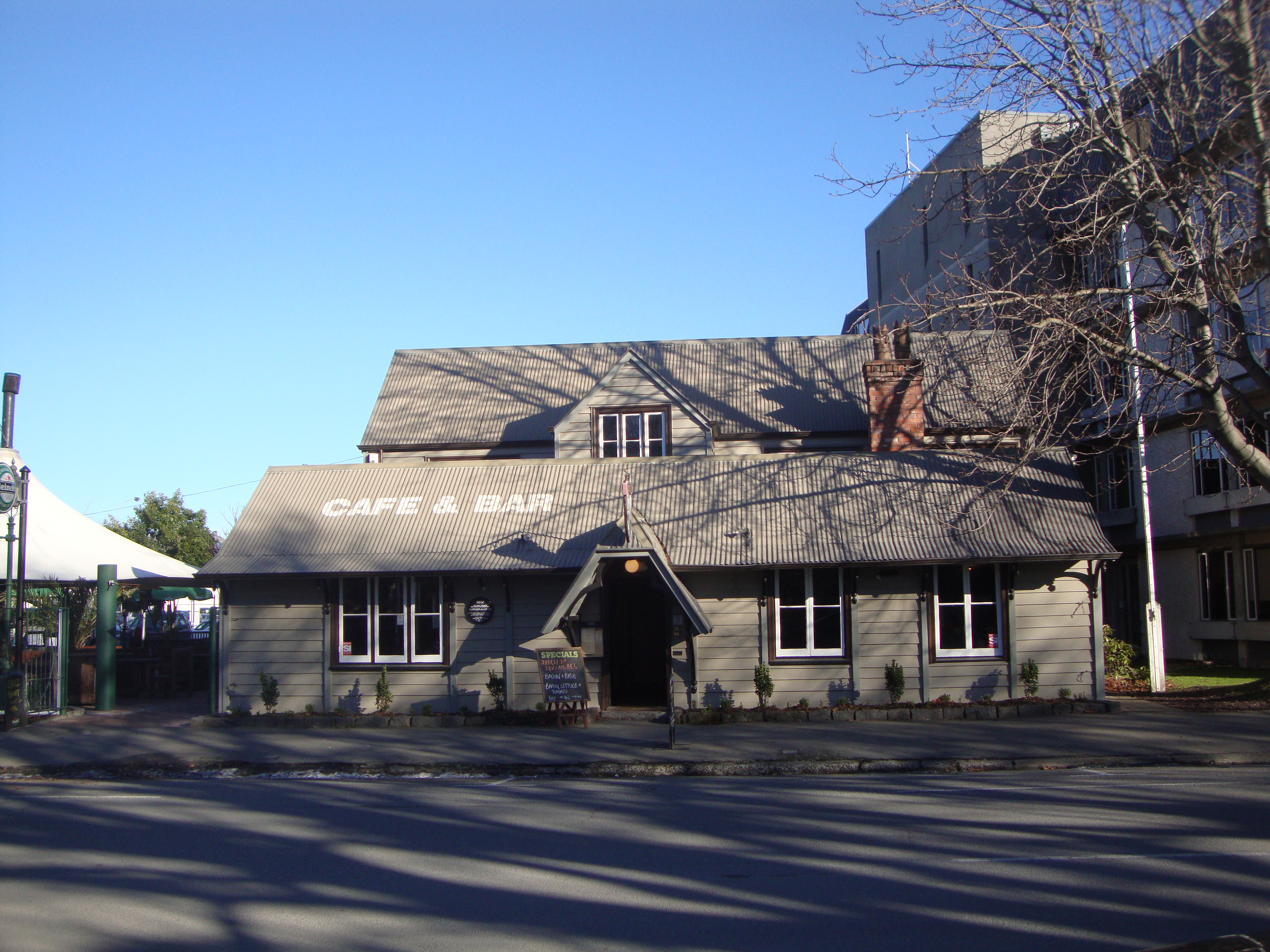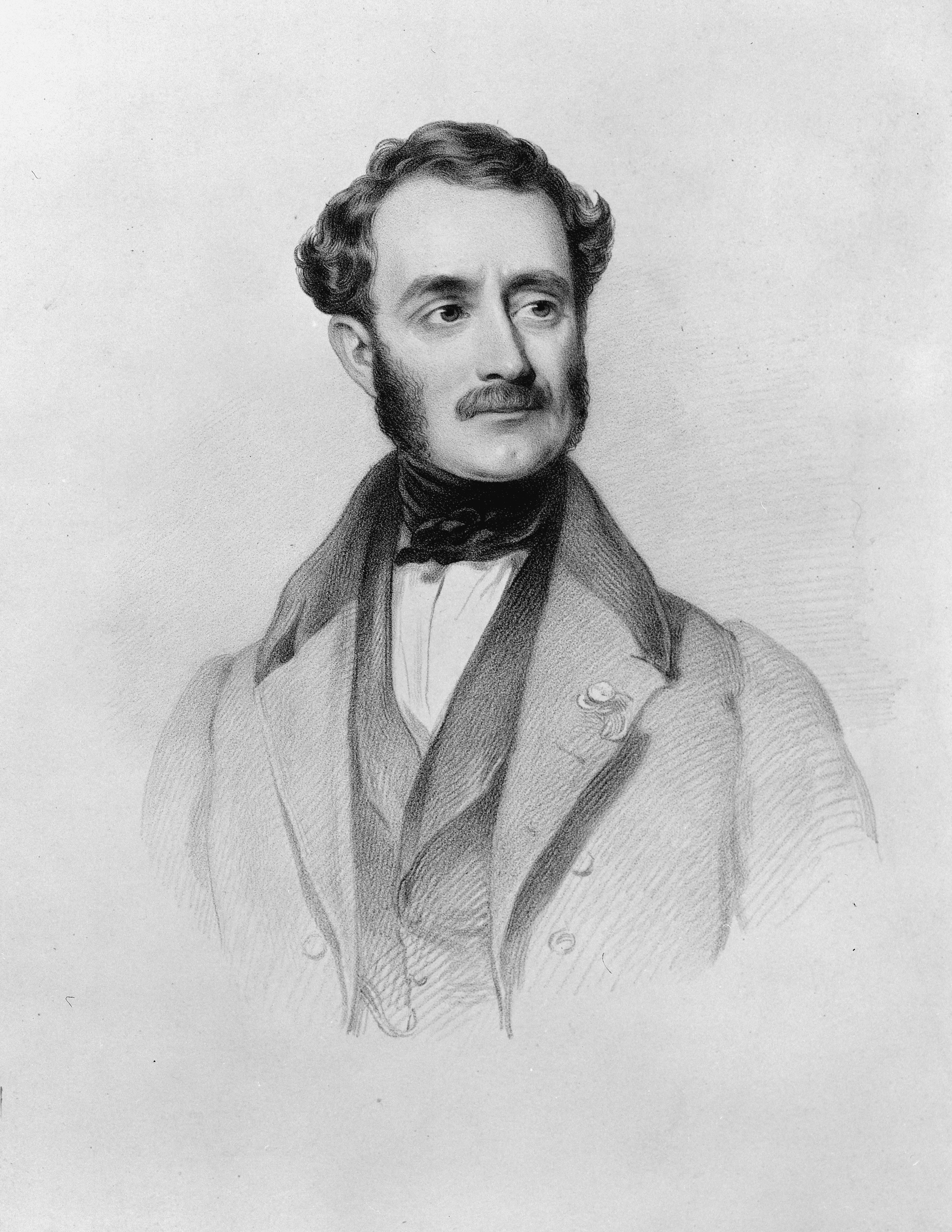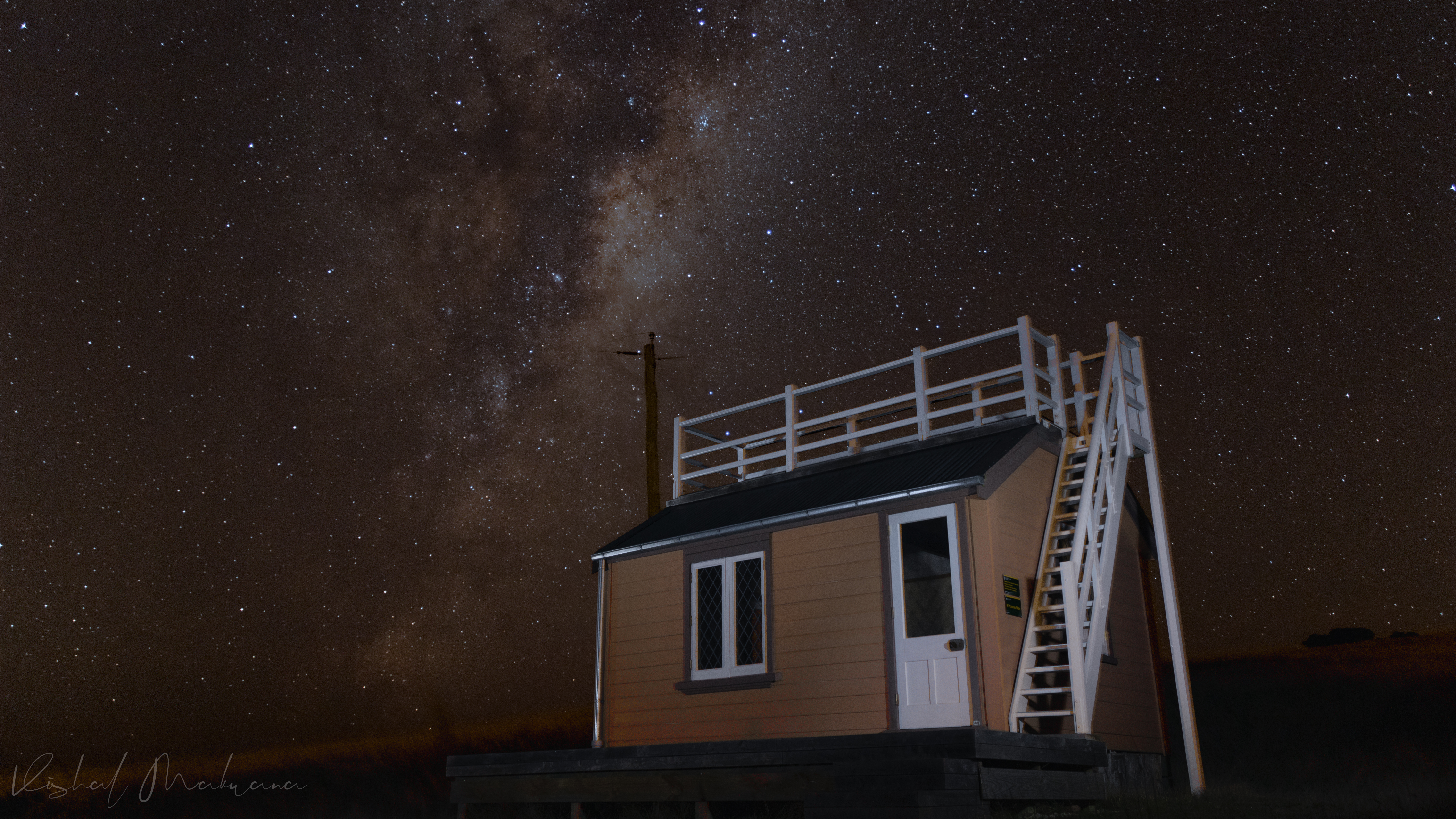|
Henry Le Cren
Henry John Le Cren (2 July 1828 – 20 May 1895) was a New Zealand merchant. Born in London, he was an early settler in Lyttelton and traded both in the port town and central Christchurch. He moved to Timaru in 1858 and is regarded as one of the town's pioneers. Companies owned by him or his eldest son are predecessors to the New Zealand agricultural supply business PGG Wrightson. Early life Le Cren was born in London, England and baptised on 3 September 1828. His parents were Henry Le Cren and Emma Ann Le Cren (née Davies). Both his father and his maternal grandfather were French exiles. The family lived in Greenwich, and Henry and his brother Frederic were sent to Christ's Hospital in Horsham in West Sussex for their education. He entered the merchant banking house ″Frühling & Göschen″ (later Anglicised to become Fruhling & Goschen) where he worked alongside George Joachim Goschen who was made a director of the Bank of England at age 25.Gordon Parry, ''National Mortgage ... [...More Info...] [...Related Items...] OR: [Wikipedia] [Google] [Baidu] |
London
London is the capital and largest city of England and the United Kingdom, with a population of just under 9 million. It stands on the River Thames in south-east England at the head of a estuary down to the North Sea, and has been a major settlement for two millennia. The City of London, its ancient core and financial centre, was founded by the Romans as '' Londinium'' and retains its medieval boundaries.See also: Independent city § National capitals The City of Westminster, to the west of the City of London, has for centuries hosted the national government and parliament. Since the 19th century, the name "London" has also referred to the metropolis around this core, historically split between the counties of Middlesex, Essex, Surrey, Kent, and Hertfordshire, which largely comprises Greater London, governed by the Greater London Authority.The Greater London Authority consists of the Mayor of London and the London Assembly. The London Mayor is distinguished fr ... [...More Info...] [...Related Items...] OR: [Wikipedia] [Google] [Baidu] |
Auckland
Auckland (pronounced ) ( mi, Tāmaki Makaurau) is a large metropolitan city in the North Island of New Zealand. The List of New Zealand urban areas by population, most populous urban area in the country and the List of cities in Oceania by population, fifth largest city in Oceania, Auckland has an urban population of about It is located in the greater Auckland Region—the area governed by Auckland Council—which includes outlying rural areas and the islands of the Hauraki Gulf, and which has a total population of . While European New Zealanders, Europeans continue to make up the plurality of Auckland's population, the city became multicultural and Cosmopolitanism, cosmopolitan in the late-20th century, with Asian New Zealanders, Asians accounting for 31% of the city's population in 2018. Auckland has the fourth largest Foreign born, foreign-born population in the world, with 39% of its residents born overseas. With its large population of Pasifika New Zealanders, the city is ... [...More Info...] [...Related Items...] OR: [Wikipedia] [Google] [Baidu] |
Christchurch City Libraries
Christchurch City Libraries is operated by the Christchurch City Council and is a network of 21 libraries and a mobile book bus. Following the 2011 Christchurch earthquake the previous Christchurch Central Library building was demolished, and was replaced by a new central library building in Cathedral Square, ''Tūranga'', which opened in 2018. Early history The library began as the Mechanics' Institute in 1859, when 100 subscribers leased temporary premises in the then Town Hall. The collection consisted of a few hundred books. By 1863, with the help of a grant from the Provincial Government, the Mechanics' Institute opened a building on a half-acre of freehold land on the corner of Cambridge Terrace and Hereford Street, purchased the year before at a cost of £262.10.0. This site was to remain the home of the library until 1982. Debt, dwindling subscribers and other problems forced the institute to hand over the building to the Provincial Government in 1873. By this time t ... [...More Info...] [...Related Items...] OR: [Wikipedia] [Google] [Baidu] |
Stock And Station Agent
Stock and station agencies are businesses which provide a support service to the agricultural community. Their staff who deal with clients are known as stock and station agents.In his book Simon Ville states: "The term stock and station agent is variously defined as the buying and selling of rural properties and stock or dealing in land, products and supplies, ''Macquarie Dictionary'' (2nd edn, Sydney, 1988), p 985, ''Australian Concise Oxford Dictionary'' (2nd end, Melbourne, 1992) p 1141.However the business of most leading agents was much wider than this. The terms "pastoral" or "farming" agent might better convey the broad meaning. The three terms are used interchangeably in this book (''The Rural Entrepreneurs'') as was the practice of the firms themselves." Simon Ville, page 219, ''The Rural Entrepreneurs'' Cambridge University Press, 2000. They advise and represent farmers and graziers in business transactions that involve livestock, wool, fertiliser, rural property and equip ... [...More Info...] [...Related Items...] OR: [Wikipedia] [Google] [Baidu] |
Heritage New Zealand
Heritage New Zealand Pouhere Taonga (initially the National Historic Places Trust and then, from 1963 to 2014, the New Zealand Historic Places Trust) ( mi, Pouhere Taonga) is a Crown entity with a membership of around 20,000 people that advocates for the protection of ancestral sites and heritage buildings in New Zealand. It was set up through the Historic Places Act 1954 with a mission to "...promote the identification, protection, preservation and conservation of the historical and cultural heritage of New Zealand" and is an autonomous Crown entity. Its current enabling legislation is the Heritage New Zealand Pouhere Taonga Act 2014. History Charles Bathurst, 1st Viscount Bledisloe gifted the site where the Treaty of Waitangi was signed to the nation in 1932. The subsequent administration through the Waitangi Trust is sometimes seen as the beginning of formal heritage protection in New Zealand. Public discussion about heritage protection occurred in 1940 in conjunction with t ... [...More Info...] [...Related Items...] OR: [Wikipedia] [Google] [Baidu] |
Christchurch Central City
Christchurch Central City or Christchurch City Centre is the geographical centre and the heart of Christchurch, New Zealand. It is defined as the area within the Four Avenues (Bealey Avenue, Fitzgerald Avenue, Moorhouse Avenue and Deans Avenue) and thus includes the densely built up central city, some less dense surrounding areas of residential, educational and industrial usage, and green space including Hagley Park, the Christchurch Botanic Gardens and the Barbadoes Street Cemetery. It suffered heavy damage in the 2010 Canterbury earthquake and was devastated in the 2011 Christchurch earthquake. Following this second earthquake, the Central City Red Zone The Central City Red Zone, also known as the CBD Red Zone, was a public exclusion zone in the Christchurch Central City implemented after the 22 February 2011 Christchurch earthquake. After February 2013, it was officially renamed the CBD Rebuil ... was set up and, with a gradually shrinking area, remained inaccessible ... [...More Info...] [...Related Items...] OR: [Wikipedia] [Google] [Baidu] |
Victoria Square, Christchurch
Victoria Square is located in central Christchurch, New Zealand. Originally known as Market Place or Market Square, it was the site of market days, fairs, and trade before its redevelopment in 1896–1897 into a park. Subsequent to the February 2011 earthquake, the square was located in the Central City Red Zone and was closed, reopening in November 2012. Its notable landmarks include the Captain James Cook statue, Queen Victoria statue, H. L. Bowker Fountain, and the Victoria Square Poupou. It also features the country's oldest cast iron and stone bridge, now known as the Hamish Hay Bridge. Geography Victoria Square is one of four squares located in the Christchurch Central City. It is located just north-west from its centre, Cathedral Square. Colombo Street is the north-south street through Cathedral Square, and it forms the eastern boundary of Victoria Square. Armagh Street bounds the square on the southern side. The Avon River diagonally bisects the square. In the earl ... [...More Info...] [...Related Items...] OR: [Wikipedia] [Google] [Baidu] |
Colombo Street
Colombo Street is a main road of the city of Christchurch, New Zealand. It runs south-north through the centre of Christchurch with a break at Cathedral Square. As with many other central Christchurch streets, it is named for a colonial Anglican bishopric, Colombo, Sri Lanka in what at the time was known as Ceylon. Parts of the street which run through Sydenham were known as Addison Street during the 1880s, and some parts were known as Colombo Road. Geography Colombo Street runs for due north-south. As with most Christchurch north-south streets, its numbering starts at its southern end. Like most of central Christchurch, the street is flat. It starts south of the city centre at a roundabout junction with Dyers Pass Rd, which descends from the Port Hills and Cashmere and Centaurus Roads, which run along the foot of the hills. For its first few hundred metres the street runs north-northeast through the suburb of Somerfield, before turning due north and crossing the Heathcote R ... [...More Info...] [...Related Items...] OR: [Wikipedia] [Google] [Baidu] |
Lyttelton Times
The ''Lyttelton Times'' was the first newspaper in Canterbury, New Zealand, publishing the first edition in January 1851. It was established by the Canterbury Association as part of its planned settlement of Canterbury and developed into a liberal, at the time sometimes seen as radical, newspaper. A successor paper, ''The Star'', is published as a free bi-weekly newspaper. James FitzGerald was the newspaper's first editor, and it was FitzGerald who in 1861 set up its main competitor, ''The Press'', over the ''Lyttelton Times support for the Lyttelton Rail Tunnel. In 1935, it was ''The Press'' that won the competition for the morning newspaper market in Christchurch; the ''Lyttelton Times'' was the oldest newspaper in the country when it ceased that year. History The Canterbury Association was formed in order to establish a colony in what is now the Canterbury Region in the South Island of New Zealand. Part of the plan was to have a newspaper, and a prospectus was published in A ... [...More Info...] [...Related Items...] OR: [Wikipedia] [Google] [Baidu] |
Lyttelton Harbour
Lyttelton Harbour / Whakaraupō is one of two major inlets in Banks Peninsula, on the coast of Canterbury, New Zealand; the other is Akaroa Harbour on the southern coast. It enters from the northern coast of the peninsula, heading in a predominantly westerly direction for approximately from its mouth to the aptly-named Head of the Bay near Teddington. The harbour sits in an eroded caldera of the ancient Banks Peninsula Volcano, the steep sides of which form the Port Hills on its northern shore. The harbour's main population centre is Lyttelton, which serves the main port to the nearby city of Christchurch, linked with Christchurch by the single-track Lyttelton rail tunnel (opened 1867), a two lane road tunnel (opened 1964) and two roads over the Port Hills. Diamond Harbour lies to the south and the Māori village of Rāpaki to the west. At the head of the harbour is the settlement of Governors Bay. The reserve of Otamahua / Quail Island is near the harbour head and Ripap ... [...More Info...] [...Related Items...] OR: [Wikipedia] [Google] [Baidu] |
Godley Head
Awaroa / Godley Head (), called Cachalot Head by early French explorers, is a prominent headland in Christchurch, New Zealand, located at the entrance to Lyttelton Harbour / Whakaraupō. The headland is named for John Robert Godley. Etymology The headland was known to Māori as Awaroa. The wider area around Gollans Bay within Lyttelton Harbour / Whakaraupō is also known as Otokitoki, and this Māori language word refers either to 'the place of tokitoki' (a native tree commonly known as tītoki), or a brown duck ('' Anas chlorotis''), or New Zealand dabchick ('' Poliocephalus rufopectus''). The French whaler ''Cachalot'', commanded by Jean Langlois, came to grief in this location in 1838, and the headland was then known Cachalot Head. The headland was renamed by Captain Joseph Thomas, the chief surveyor of the Canterbury Association, in his 1849 survey of Canterbury. Location Godley Head is the easternmost end of the Port Hills. It forms the northern boundary to the entranc ... [...More Info...] [...Related Items...] OR: [Wikipedia] [Google] [Baidu] |
Henry Tancred (New Zealand Politician)
Henry John Tancred (1816 – 27 April 1884), also known as Harry Tancred, was a 19th-century New Zealand politician. Early life Tancred was baptised on 14 May 1816 at the Isle of Wight. His father was Sir Thomas Tancred, 6th Baronet and his elder brother was Sir Thomas Tancred, 7th Baronet. He was educated at Rugby School. He served in the Austrian army and fought in Austria, Hungary and Italy. He was severely injured in a fall from a horse and had a speech impairment as a result. New Zealand Back in England to recuperate, he became interested in the Canterbury Association and decided to emigrate. He arrived in Canterbury in December 1850 from Wellington on the ''Barbara Gordon'', just prior to the arrival of the first Canterbury settlers. He married Georgeanna Janet Grace Richmond in Nelson on 30 July 1857. Political career Provincial Council Tancred was one of three candidates for the role of Superintendent in 1853. The election was won by James FitzGerald. He became a ... [...More Info...] [...Related Items...] OR: [Wikipedia] [Google] [Baidu] |

_p225_AUCKLAND%2C_NEW_ZEALAND.jpg)






